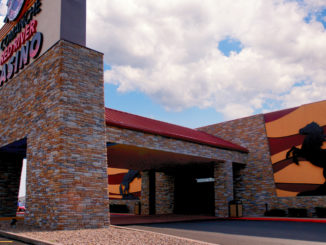Stagnant, inactive, dormant and dull.
Why is the most important program within your control being ignored and overlooked?
The program that affects almost every department. The program that touches most guests daily, including your cherished high-value, top players.
Your players club.
It’s the river that flows through your property. It’s THE dominant touchpoint. It’s the veins carrying the lifeblood that feeds into nearly every operating department.
While players clubs are entirely measurable and testable, many choose to leave them on cruise control.
Too often your loyalty club is a stagnant collection of offers and benefits that shows up on the gaming floor with uninspired redundancy.
Too often your loyalty club is untouched and routine.
A vibrant players club that continually undergoes review will always regenerate stronger. Successful organizations consistently look for ways to update and improve their players club.
Here are six steps to consider before you begin the job of reshaping and updating your players club.
1. Brand Association
Ask yourself, “What kind of property are we?”
What are your property’s strengths? Are you a friendly property, a value property, a highly amenitied resort, an entertaining property, or a local gaming-centric property?
Your players club reflects your brand, and your brand resonates in your players club.
A players club is the most influential guest experience you can offer.
Performing a brand analysis helps to understand your niche. Your niche is the thing that your company does best. When you understand the thing that your property does best, then you can focus on the strengths that lead to an evolution of your players club.
2. Ask Guests What They Want
The next step in a players club analysis is to design research projects that are systematic and disciplined. Several types of research projects can be applied. A quantitative survey designed by a research expert can dissect the players club piece by piece. A layered and measured survey will allow you to drill down into what is working and what is not working in your players club.
An online survey will allow you to understand your players club in real time. Post research on your players club website or social media. This will provide fast and accurate answers to questions that you have about the functions and benefits of your players club that you can then execute quickly.
Conducting focus groups on a formal or informal basis can pick up patterns and uncover issues. Ensure that your focus groups represent a balanced approach that includes all players club levels. This will guarantee that you understand what high-end players are thinking, as well as how the middle markets and lower value players are reacting to your players club.
3. Know Your Competition
One of the remarkable things about a competitive players club survey is that all casinos publish some form of players club chart that explains benefits at each level. You can learn a great deal about the elements and offerings of your competition through a simple online survey.
4. Competitive Analysis
Knowing your competitors’ players club structure is good, but the missing key is knowing the level of offers that your competition awards.
Designing a disciplined offer survey will give you insights into what your competition is spending at each tier. You can commission a shopping service to visit the competition, play table games and slots, stay at hotels, participate in entertainment, and visit food and beverage outlets.
Another technique is to assign your own team members to visit competitive casinos, join their players clubs, and play slots and table games. It is vital that several members of your team play at distinct levels. After some time, the competitive survey team members will receive offers. If the program is designed correctly, then you will begin to see a picture of your competition’s offer grids, at several levels of play. This is a long-term program that is well worth the effort to understand your competitors’ offers.
5. Due Diligence to Cut the Dead Wood
Smart companies understand that a loyalty club is an organic, living organism that reflects your company’s brand in every way.
Too often, players clubs are ignored and remain an untouched program that drifts like a waterlogged tree. The most crucial step in a players club revitalization program is to look at every benefit and every offer to ensure positive ROI at each step.
You can achieve meaningful profit levels by persistently digging out losing offers and replacing them with benefits that improve the bottom line.
Completing a thorough analysis of your players club benefits is a vital step. Performing continuing analytical reviews of your players club and offers is a routine that separates the dynamic players clubs from the dead wood.
6. A Players Club Is a Team Sport
A vibrant players club reaches into nearly every department on your property.
Keeping inclusive communication and cooperation with all departments is the driving force of any successful players club. Consistent discussions with the departments affected can help develop a players club that is strong and anticipates necessary changes. Communication should go beyond the basics of monthly offers that affect each department.
Sharing how the players club directly affects departmental operations will always lead to a sharper, more efficient program.
Lifeblood
Constant refreshment of your players club drives results that contribute to the bottom line while growing the business. It’s important to keep on top of competitive changes through alert tracking. Staying connected with your own guests through surveys will guide you through necessary changes. Teamwork with other departments will help you keep ahead of the curve when it comes to fluctuations in operating effects.
A profitable, thriving players club will always give your property a massive competitive advantage. And a flourishing players club will keep your property from becoming that waterlogged tree floating at the bottom of the market.





